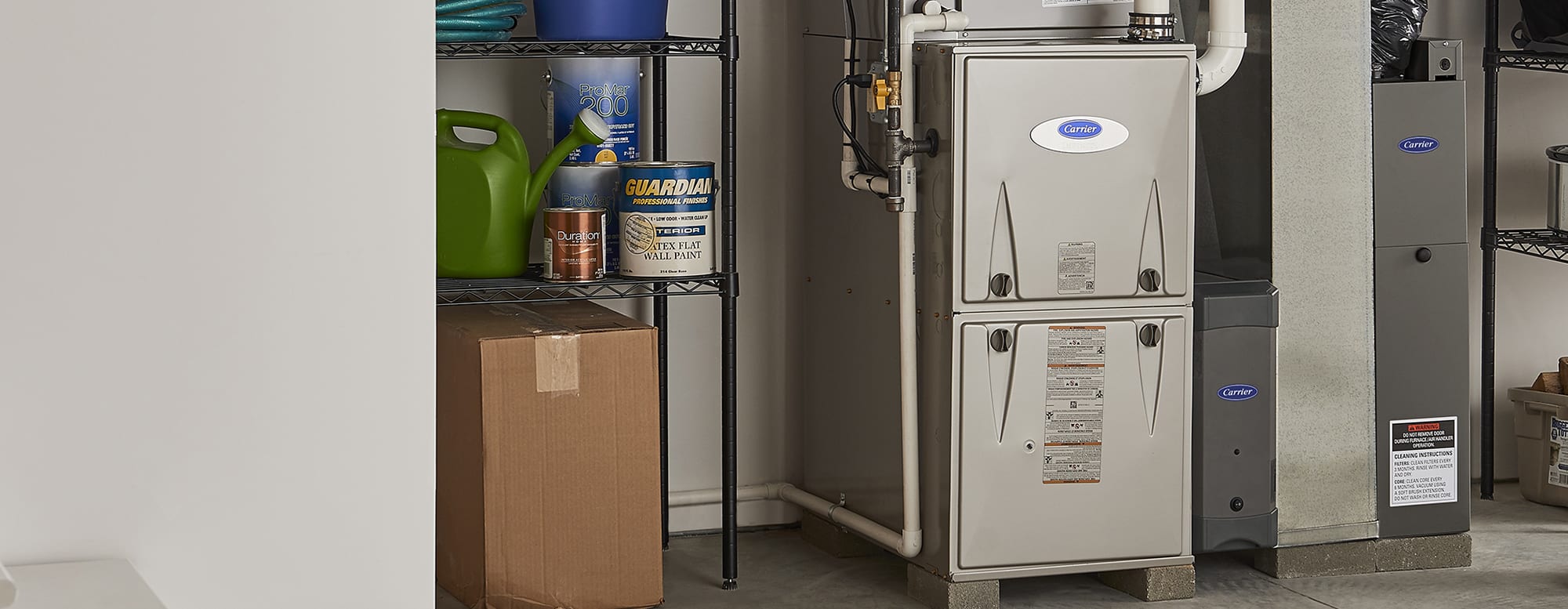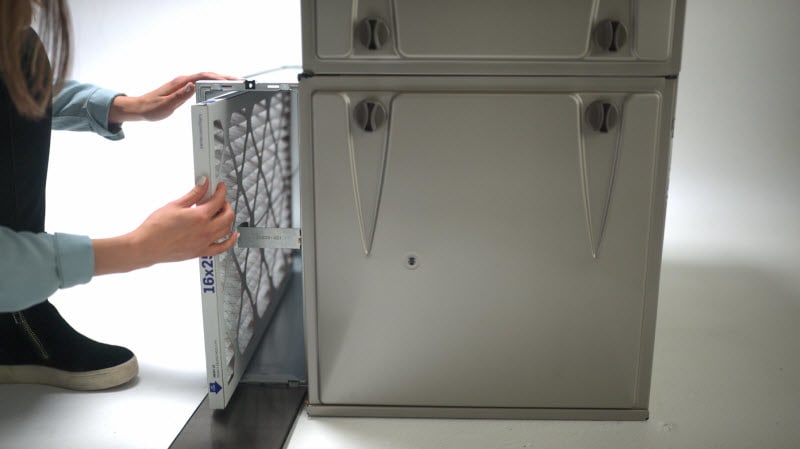The How & Why of Furnace Filter Replacement
In the realm of home maintenance, changing furnace filters is one of the easiest tasks you can tackle. When buying a furnace, this often-overlooked activity can have a huge impact on your home’s heating and air conditioning, can help improve indoor air quality, and it might even save you some money on both energy bills and HVAC system service. That’s because a dirty filter can restrict air flow, cause loss of efficiency, impacting your furnace AFUE and maybe even impact the reliability of your furnace.
As you might imagine, just as there are a number of different types of furnaces on the market, like high efficiency furnaces, there are a number of options when it comes to furnace filters. Fiberglass filters, pleated filters, 1-inch filters and thicker 4-inch filters are just a few of the typical mechanical-type filters. More sophisticated electronic air cleaners and whole-home air purifiers have their own maintenance schedules, but many also include a pre-filter that needs to be replaced regularly.
For the health of you home comfort system, and to help improve the air quality within your home, it just makes sense to take a few minutes every month and inspect your system’s filter and if it’s dirty, go ahead and replace it.

How Often To Change Furnace Filter?
The general rule-of-thumb answer to the question “How often should you change your furnace filter?” depends on the type of filter. For basic, 1-inch filters, the standard is every 30 days to 3 months. For thicker, pleated 4-filters, you can usually count on replacing them every 90 days or 6 months depending on the recommendations of the manufacturer.
Why is changing the air filter so important? Furnace filters are designed to both improve the quality of the air you breathe, and also to protect your HVAC system from build-up of dirt and debris. When you neglect your HVAC air filter, airborne pollutants such as dust, animal dander and pollen build up on its surface. Too much buildup can restrict airflow, making the air handler work harder. This not only affects the energy efficiency of your system; it can shorten the lifespan of your furnace which might cause you to ask “how long do furnaces last?” And, because your furnace blower is often an integral part of your central air conditioner, it can affect the longevity of your cooling system as well.
While replacing furnace filters on a timed schedule is important, it’s also a good idea to become familiar with some of the signs that your filter needs to be changed:
- You notice more dust than usual, or faster build-up of dust after cleaning your home’s surfaces
- It takes longer than normal for your system to heat or cool your home (longer heating/cooling cycles)
- On visual inspection, the filter appears to be gray colored and/or you can see dusty, dirty buildup on the surface of the filter
- If you can’t remember the last time you changed the filter, or if it has been in use longer than the recommended replacement time from the manufacturer – usually one to three months for basic 1-inch filters, or 3-6 months for thicker, pleated filters
Furnace Filter Replacement – How to Change a Furnace Filter?

Replacing a furnace filter, in most cases, should be a relatively easy task for many homeowners. Before you get started, be sure to have a compatible replacement filter available. Here is a step-by-step description:
- Locate the filter. Your furnace filter is typically found in the blower compartment of the furnace or housed in the ductwork leading into the furnace.
- Turn off your system. You can either turn it off using the thermostat’s settings, or using the power cut-off switch typically located on the exterior of the furnace cabinet (it looks like a light switch).
- Remove the blower cabinet door or duct-mounted access panel to access the current filter.
- Before removing the filter, take note of the airflow direction arrows, typically printed on the side of the filter. Air should flow from the ductwork into the furnace. Additionally, if you are unsure what size filter to use as a replacement, most manufacturers print the filter dimensions on the side of the filter.
- Carefully remove the filter – depending how long it’s been since last replacement it may have quite a bit of dust and dirt buildup.
- Install the new filter ensuring that the airflow arrows are pointing in the same direction as the filter you are replacing.
- Replace the blower cabinet cover or access panel.
- Restore power to the system.
Once your system is running, be sure it seems to be operating normally, and that it is heating or cooling your home as it should.
Contact a Professional For Furnace Filter Help And More
While it is true that replacing a filter is a relatively easy task, sometimes calling a professional, even for simple maintenance or furnace service, can be reassuring. Most HVAC dealers offer maintenance contracts or modestly-priced annual clean-and-check appointments. They can inspect your filter during their visit and make recommendations on replacing them.
If you have replaced your filter on schedule and still feel that your system is not maintaining your home’s comfort, if you notice an increase in your energy bills, or if your system seems to run longer or more frequently than normal, it might be time to call for a professional assessment. Contact a Carrier Dealer to get an estimate for your home.- Is your furnace blowing cold air?
- Read more about proper furnace maintenance

